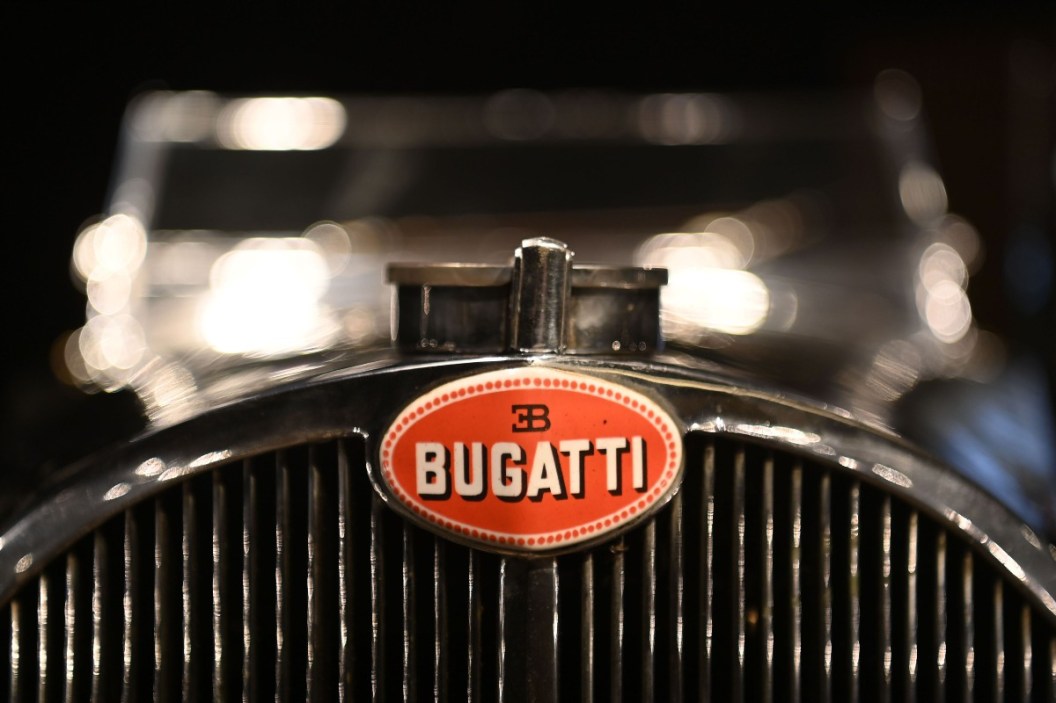There's really only one brand like Bugatti. There are precious few Bugatti sports cars on the road, which is because the car manufacturer produces just a few hundred vehicles each year. In turn, Bugattis sell for several millions of dollars each, so it's easy to see why they're scarce.
That's enough to make most of us gasp, but remember: These are extraordinarily engineered luxury motorbeasts with a top speed upwards of 304 miles per hour. This is not the regular old car brand for your average daily commuter. It's actually a supercar that embodies every aspect of luxury.
Therefore, when we see the Bugatti car logo on the streets, it means something to us. But, did you ever wonder what the Bugatti brand logo means?
Ettore Bugatti and Bugatti's Beginnings
The Bugatti brand is based in the French and German influenced region of France known as Alsace, but the founder, Ettore Bugatti, was born in Italy. Ettore Bugatti's father was Carlo Bugatti, an internationally renowned artist, furniture designer, and jewelry designer.
Ettore Bugatti, an artist and builder himself, honed his knowledge of mechanics at an apprenticeship with Italian bicycle manufacturer Prinetti & Stucchi, where he learned how to not only create motorized tricycles, but raced them, as well.
His fascination with motorsports and his aptitude for automotive design led to the construction of the Type 2 automobile in 1901. The Type 5 race car was built in 1903.
Despite Bugatti's obvious talent for design and innovative engineering, he hopped from contract to contract. Eventually, in 1909, he received sufficient financial backing to open his own factory in Molsheim, Alsace.
Production began in 1910, and several prototypes were underway. Ettore Bugatti then faced one of the most trying steps of becoming a new business owner: Marketing.
The Bugatti Logo
The logo that appears on today's regular runs, like the Bugatti Veyron and Bugatti Chiron and the one-off cars like the Divo, La Voiture Noire, and Bugatti Centodieci, remains largely unchanged from the very first version Carlo Bugatti designed for his son. It's simple, elegant, and powerful.
According to the Bugatti legacy, Ettore wanted a logo that reflected power, a rich sense of quality, and combined the essence of technical prowess and beauty that he wanted all of his cars to possess.
The deep red oval is meant to convey power, passion, and performance. Inside the oval, the name BUGATTI appears as boldly as possible in white capital lettering, outlined in black. When printed, this gives the logo a three-dimensional feel, which helps the lettering stand out literally and figuratively.
While the white BUGATTI is stark and elegant, again to convey power and authority, the "EB" lettering is styled in a flat, black font. By the way, it is actually "EB." If you've been wondering what the "3 Bs" of Bugatti are, rest assured, that's not a thing. It's just Ettore Bugatti's initials with the "E" turned around. After all, if you're going to stand behind your product, go ahead and put your name on it.
The deep red oval is outlined with a grey oval, in which there are 60 red dots. The rumors as to what these dots represent continue to this day. Some say they represent 60 pearls to communicate the opulence and integrity of the car maker's brand.
Others insist they represent safety wires. Since the engines on early vehicles like the Bugatti Type 37A were made without gaskets, an intricate lace made of safety wires held things together, giving the vehicles a very unique and ornamental appearance.
Either way, as car logos go, it is unique and certainly conveys all of the things Ettore Bugatti wanted his car brand to express.
Bugatti Through the Years
It's actually amazing that the Bugatti emblem is still alive and thriving. The Bugatti factory in Molsheim was used for German warcraft production during World War II. Ettore himself died without an heir in 1947, and though production limped on through 1956, it became apparent that the car maker was nothing without its namesake family.
In 1962, the Schlumpf brothers purchased all of the Bugattis they could find, including Ettore's personal vehicle, nicknamed "Royale." The brand rights were purchased and sold repeatedly, but the renowned car maker was not making cars.
Italian entrepreneur Romano Artioli is often credited with keeping the car manufacturer's name alive due to his purchase of the rights to the trademark in 1987. He moved Bugatti Automobili S.p.A to Italy, and resumed the practice of making extremely exclusive sports cars with very big price tags to performance enthusiasts with large wallets.
The Bugatti brand has been owned by the Volkswagen Group since 1998, and the tradition of power, performance, passion, and most of all, speed, continues today.
While many of us will never get closer to the Bugatti logo than seeing it at the top of each page on company website bugatti.com, it's interesting to note that the way we see it today is nearly identical to how Carlo Bugatti designed it 110 years ago. The concepts and cars may push the limits of physics and reality, but the logo is down to Earth and expresses the dedication the founder of the Bugatti brand put into his creations.
Products featured on Alt_driver are independently selected by our editors. However, when you buy something through our links, we may earn a commission.
This post was originally published on May 4, 2021.
